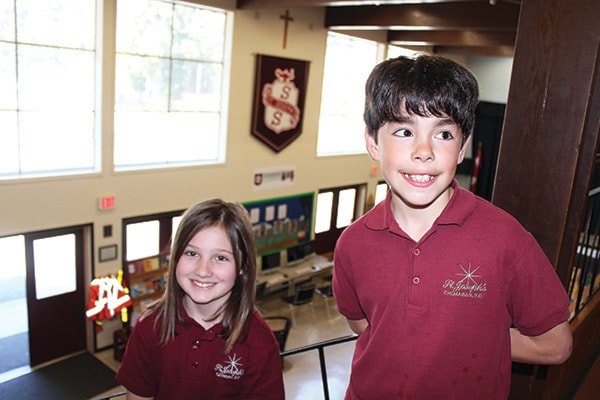In 1964, many Vancouver Islanders were buzzing about the tsunami that hit our west coast, fiercely debating the merits of that scarlet leaf Lester Pearson’s Liberal government was pushing as our new national symbol, or cheering Toronto on to its third straight Stanley Cup.
But for 118 Chemainus students and their families, the focus was much closer to home
Three years after 14 families huddled in the church basement agreed to commit $300 each to making it happen, St. Joseph’s Catholic Elementary School opened its doors.
The building may have expanded from four classrooms and a big foyer, to six classrooms a preschool, a library and a huge gymnasium. The nuns and their traditional habits may have been replaced by a staff of teaching professionals with a wide range of spiritual backgrounds. The tuition may have climbed from $6 a month to about $4,000 a year.
But the school’s central mission remains the same: a Catholic-based education revolving around the pillars of the academic, athletic, artistic and spiritual development of its students.
Bern Muller has spent nearly 20 years at the school, first as a music and intermediate teacher, then, for the past two years, as principal.
“When the school was built it was very much an initiative of the local church wanting a school their kids could attend,” he said. “Over the years that changed. Now it is a Catholic school for all.”
It was nearly 40 years ago that Therese West arrived at the school as its resident French teacher, a position she still holds.
"It's meant a lot to me. It's my life. It's been a good job and I enjoyed every minute of it," she said.
Pressed for some favourite memories, she laughed.
"Field trips, just like the kids," she said. "I remember going to Strathcona and just having an great, great time, and the Christmas concerts were always a big highlight — everything that involved community."
Lorraine Hlady started at the school in 1972, five years before West. She retired in 1998, at the same time as Sister Peg (Margaret Gormley), the last of the school's teaching nuns.
Like West, Hlady believes the school is well-respected by the community. She says having spent most of her career in one school, it is hard to make comparisons, but thinking of her time there still leaves her with warm feelings.
"It depends on your principals and your teachers, but I think we may have had a closer relationship than the public schools," she said. "I think it was quite well thought-of.
"I don't want any sugary sentiment that I didn't actually say, but I certainly want to express my gratitude for having had the opportunity to teach there."
The school is hosting a great opportunity to share the memories this weekend. Former students, parents and staff, as well as the community at large is being invited to a special 50th-anniversary mass and celebration April 19.
At 10 a.m., Gary Gordon, the bishop of Vancouver Island will host a mass at the neighbouring church. After that, the community is invited to head over to the school, soak up the nostalgia of old photographs, and reminisce.
“It’s a time to reflect on and celebrate our journey as a school: where we’ve come from, and where we’re going together,” Muller said.
Some of the names prominent in the school’s past: Sister Marie Thephane, the first principal; Leonard Peter, who was hired to drive the school’s first bus in 1970 and held the job for the next 23 years, and Annie Arbanas (Guilbride), the first graduate of the school to return to teach.
The school’s enrollment has ebbed and flowed with the economic, political and social trends of the community, from a peak of about 216 students to about half that. Today it is home to about 140, plus a pre-school, with students drawn from as far away as Nanaimo and Crofton, with a heavy emphasis currently coming from Ladysmith.
It features a significant First Nations presence with close to a third of the student body being drawn from the Stz’uminus, Penelakut and Halalt bands.
Muller said the reasons for attending the school vary, but there is a common thread that binds.
“Individual desires make for a lot of reasons,” he said. “Parents are pleased with the connection. They feel like they are part of the community.”
